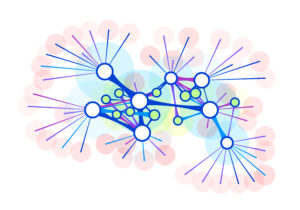
Graph Database ‘Shapes’ Data

via Shutterstock
A semantic graph database technology vendor is supporting a key specification designed to validate graph-based data against a set of conditions that specify the “shape” of data. The goal is a more agile way of analyzing larger volumes of complex, distributed data.
Franz Inc. said this week its flagship AllegoGraph platform now supports SHACL, the SHApe Constraint Language used to describe “the shape that data should have.” The spec was developed by the World Wide Web Consortium.
The language using a concept known as “triples” to describe data properties. Triples refers to the subject (the thing being described), predicate (properties or relationships of the subject) and object (an intrinsic value such as an integer or text).
SHACL also specifies the number of triples required in a repository along with metadata about the object, including a specified subject and predicate.
Oakland-based Franz said support for SHACL would improve the ability of its graph database to validate data and applications from outside sources while improving interoperability. “Adding SHACL to AllegroGraph helps our customers simplify the complexity of enterprise systems through the ability to loosely combine independent elements, while allowing the overall system to function smoothly,” said CEO Jans Aasman.
The 6.6 version of AllegroGraph includes a data-shaping validation engine used to confirm whether data conforms with desired requirements. SHACL allows a data graph, for instance, to specify the corresponding shapes graph used to describe the link between a given shape and targeted data.
Franz claims its upgraded, flexible architecture makes it the first graph database vendor to release a “multi-model” semantic graph and document database. That, it continues, is important as rigid architectures fail to keep pace with the size, complexity and distributed nature of big data.
By multi-model, Franz said its semantic graph database supports ingestion of different JSON documents as well as Resource Description Framework (RDF), or triplestore, data—another World Wide Web Consortium spec.
That capability allows the Franz graph database to link structured RDF data to data within JSON documents. The company said that feature allows users to perform graph analytics across databases, documents and CSV files.
Franz said this week its AllegroGraph version 6.6 with support for the data-shaping standard is available now.
Recent items:
Partners Look to Scale ‘Chomsky Knowledge Graph’
Why Knowledge Graphs Are Foundational to Artificial Intelligence






























